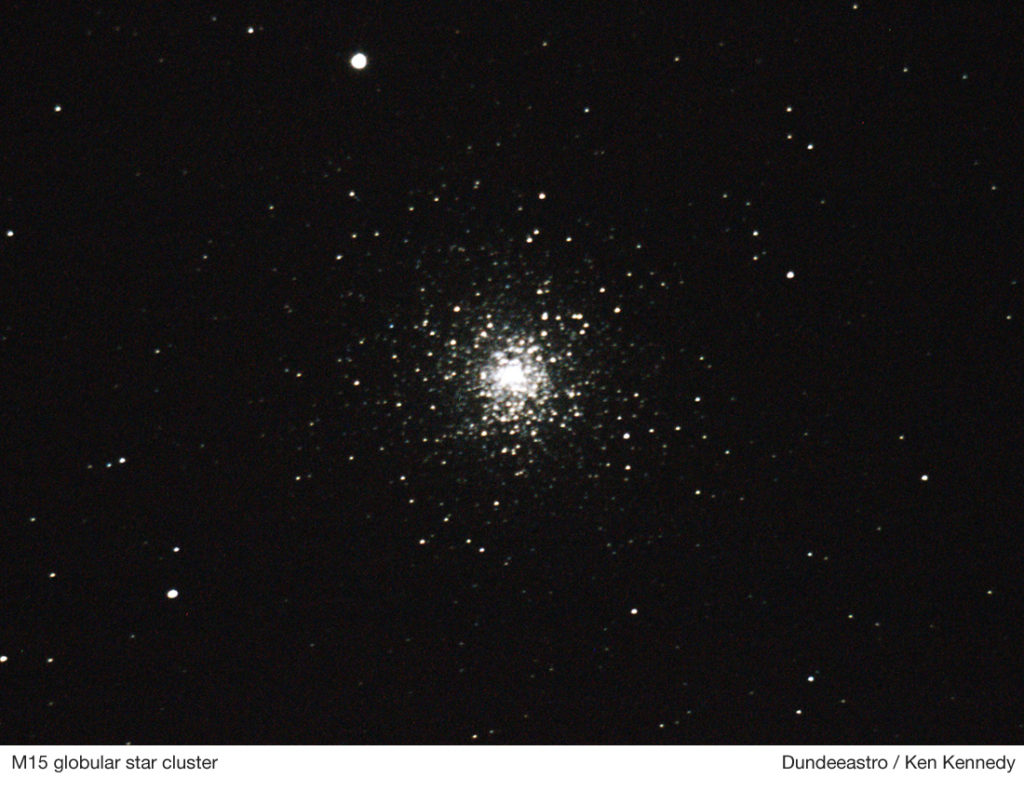Update from Dundee Astronomical Society. Ken Kennedy writes …
Phil and I had a trip to our observatory on Wednesday evening as the sky (miraculously!) cleared. Our aim was to check out the ‘Go-To’ function of the telescope following our refinement of the polar alignment on the last clear night (a few weeks ago).
The procedure is to start from a ‘parked’ position and ask it to go to a reference star then fine tune the alignment with the hand set. We chose the star Altair and centred it then asked the telescope to go to a nebula known as the Dumbbell Nebula (M27). To our joy it went there almost precisely.
We then asked it to go to the globular cluster, Messier 15, which it did, again very accurately. At this point, having our cameras with us, we decided to have a go at taking a few images of M15. I had always thought of this telescope as being most useful for photographing (or viewing) the Moon and planets because of its long focal length but I was amazed to see the results of our brief attempt at a distant, faint object.
I took only 10 images of 20 second exposure each. Normally for deep sky work I would take about 40 images of 30 – 60 seconds each but I could see that the results with the 12 inch Meade looked very promising.
Just 33,000 light years way and 12 billion years old
I have attached a final image of M15 which was produced by stacking the images I took. With this result I think the potential to photograph faint, deep sky objects is huge and I look forward to trying some other objects soon.

Out of interest, M15 is a globular star cluster in Pegasus at a distance of 33,000 light years and with an age of 12 billion years. It is a very dense concentration of stars which probably has a black hole at its core.
We continued to have a look at several other objects with complete success.
Invitation to Astronomy night?
We would like to ask any Hutton staff who may be interested to have a look through our telescope. Probably the best object to begin with would be the Moon but that is very low at first quarter until at least December and it gets better at the start of next year.
However, although low, it may be possible between November 04 and 12 and December from 06 – 12. The hedge to the south of the observatory has grown a bit and may hide the Moon at its lowest points but it isn’t a problem otherwise so, if there happened to be clear forecast, perhaps I could contact you earlier in the day and you could pass that on to staff. I know it’s a last minute thing but, unfortunately, that’s the nature of astronomy (at least in Scotland!).
If interested staff knew there could be a last minute call, perhaps they would be willing to return to Hutton for around 7pm on any clear night on which we would contact you during the day,
Ed: Thanks again Ken. We’ll find a way to let people know about this and get the message out on the day.
